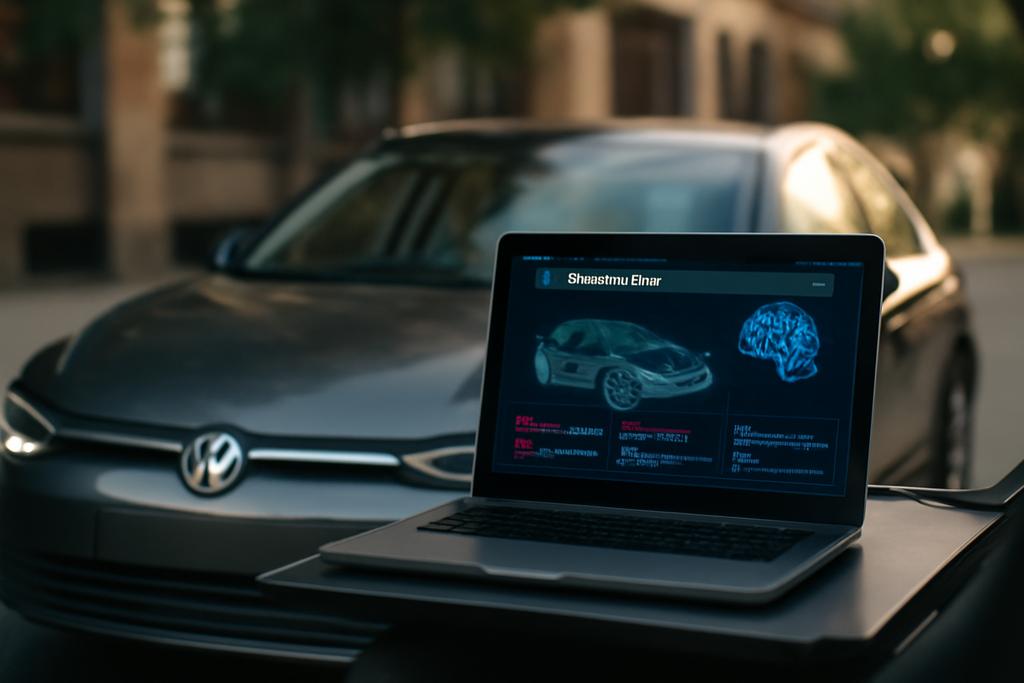The Dawn of Automated Car Diagnostics
Imagine a world where self-driving cars, with their intricate software and complex networks, diagnose their own malfunctions in real-time. This isn’t science fiction; it’s the promise of SDVDiag, a new platform developed by researchers at the University of Stuttgart. This groundbreaking system isn’t just about fixing problems faster; it’s about building a foundation for truly reliable and safe autonomous vehicles. The implications ripple far beyond the immediate; SDVDiag represents a fundamental shift in how we approach the design, deployment and maintenance of complex systems in the age of ubiquitous connectivity.
The Problem: A Web of Interdependencies
Modern vehicles are less like machines and more like rolling data centers, packed with sensors, software, and cloud connections. When something goes wrong, pinpointing the source of the trouble can be like searching for a single faulty wire in a colossal, tangled mess. It’s a time-consuming, error-prone process, potentially leading to dangerous delays in resolving critical issues. The sheer complexity of these systems—a vast web of interdependencies spanning the vehicle itself, nearby edge servers, and distant cloud infrastructure—makes manual diagnosis effectively impossible.
SDVDiag: The Automated Solution
SDVDiag tackles this challenge head-on by automating the entire diagnostic process. Think of it as a highly sophisticated mechanic, but instead of wrenches and screwdrivers, it uses algorithms and data analysis. The system continuously monitors the car’s various components and their interactions, constantly building and updating a detailed map of how everything is connected. This map, a dynamic graph, visualizes the relationships between different parts of the system, identifying dependencies and potential points of failure. The system employs distributed tracing to track data flows in real time across different components, ensuring no single malfunction can escape its comprehensive purview.
Anomaly Detection and Root-Cause Analysis
But SDVDiag is more than just a visualizer; it’s a proactive problem-solver. It employs cutting-edge anomaly detection techniques to identify deviations from expected performance patterns in the car’s system. When it detects something unusual, it doesn’t simply throw up a warning light; it initiates a root-cause analysis. By leveraging causal inference algorithms, the system traces the causal chain of events that led to the anomaly, effectively pinpointing the source of the problem.
This is where the real magic happens. Unlike simple correlation analysis, the system delves into the underlying cause-and-effect relationships, effectively disentangling the complex web of dependencies to determine the root cause, not just the surface symptom. This precision diagnosis drastically reduces downtime and allows for more targeted repairs.
Machine Learning and Adaptability
At the heart of SDVDiag’s capabilities lies machine learning. The system isn’t static; it continuously learns and adapts. Its anomaly detection models and causal inference algorithms are refined through ongoing training, ensuring that it remains effective even as the vehicle’s software evolves through over-the-air updates or as its operational environment changes. This self-learning capability is crucial in a world where technology is constantly advancing.
This adaptive system isn’t just reacting to problems; it’s anticipating them and learning from them. The more data it processes, the better it gets at identifying anomalies and predicting potential failures. It learns to distinguish between genuine problems and false alarms, continuously refining its diagnostic accuracy.
Testing and Results: A Real-World Demonstration
The researchers tested SDVDiag in a real-world setting: a 5G-connected test fleet environment at the University of Stuttgart. They simulated various malfunctions within a smart charging application deployed on a fleet of unmanned ground vehicles. The results were promising, showcasing SDVDiag’s ability to reliably detect injected faults and pinpoint the sources of problems—a significant step forward in making autonomous driving safer.
The Broader Impact: A Paradigm Shift
SDVDiag’s impact extends far beyond the automotive industry. The principles behind this system—continuous monitoring, dynamic dependency mapping, machine-learning-driven anomaly detection, and causal inference—are applicable to a wide range of complex distributed systems. From smart grids to industrial automation to cloud infrastructure, the ability to automatically diagnose problems in real time represents a paradigm shift with potentially transformative implications across countless sectors.
The work of Matthias Weiß, Falk Dettinger, and Michael Weyrich at the Institute of Industrial Automation and Software (IAS), University of Stuttgart, represents a crucial leap forward in our pursuit of safer, more reliable, and more intelligent systems. SDVDiag isn’t just a diagnostic tool; it’s a testament to the power of marrying artificial intelligence with real-world engineering challenges, forging a future where technology learns to anticipate and address its own limitations.










